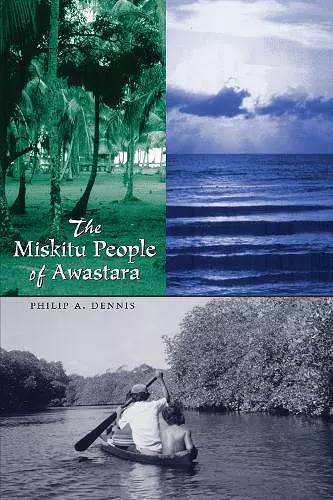The Miskitu People of Awastara
Format:Paperback
Publisher:University of Texas Press
Published:1st Aug '04
Currently unavailable, and unfortunately no date known when it will be back

"Most anthropologists who have lived among other people . . . feel a periodic need to go back," writes Philip A. Dennis in the introduction to this book. "Fieldwork gives you a stake in the people themselves, a set of relationships that last the rest of your life . . . and when the time is right, it is important to go back."
Dennis first journeyed to Awastara, a village on the northeastern coast of Nicaragua, during 1978-1979 as a postdoctoral student. He had come to study a culture-bound syndrome in which young women are possessed by devils. In the process, he became fascinated by other aspects of Miskitu culture—turtle fishing, Miskitu Christianity, community development efforts—the whole pattern of Miskitu community life. He also formed deep friendships to carry into the future.
Twenty years later he was able to return and continue his ethnographic work. Utilizing ideas from recent interpretive anthropology and a vivid writing style, Dennis describes food habits, language, health practices, religious beliefs, and storytelling, inviting the reader to experience life in Awastara along with him. Building upon earlier work by Mary Helms, Bernard Nietschmann, Edmund Gordon, and Charles Hale, The Miskitu People of Awastara makes its own original contribution. It is the first full-length study of a coastal Miskitu community north of Puerto Cabezas, contrasting life before and after the war years of the 1980s. It will be a valuable addition to the literature on this indigenous group and should appeal to anthropologists and other social scientists, as well as all readers interested in peoples of the Caribbean coast.
[The book] will undoubtedly prove to be an exceptionally valuable resource for those scholars researching the still poorly udnerstood peoples of Central America's Caribbean shore, and it should attract attention among anthropologists working in similar frontier contexts who might be looking for insightful comparative materials. Finally, it is also a sensitive and rather personal account of an anthropologist feeling his way back into a community that he left behind twenty years previously and which has changed considerably. Students wishing to get a sense of how anthropologists really experience and do fieldwork will, therefore, also find it particularly valuable. * The Journal of the Royal Anthropological Institute *
ISBN: 9780292702813
Dimensions: unknown
Weight: 454g
320 pages